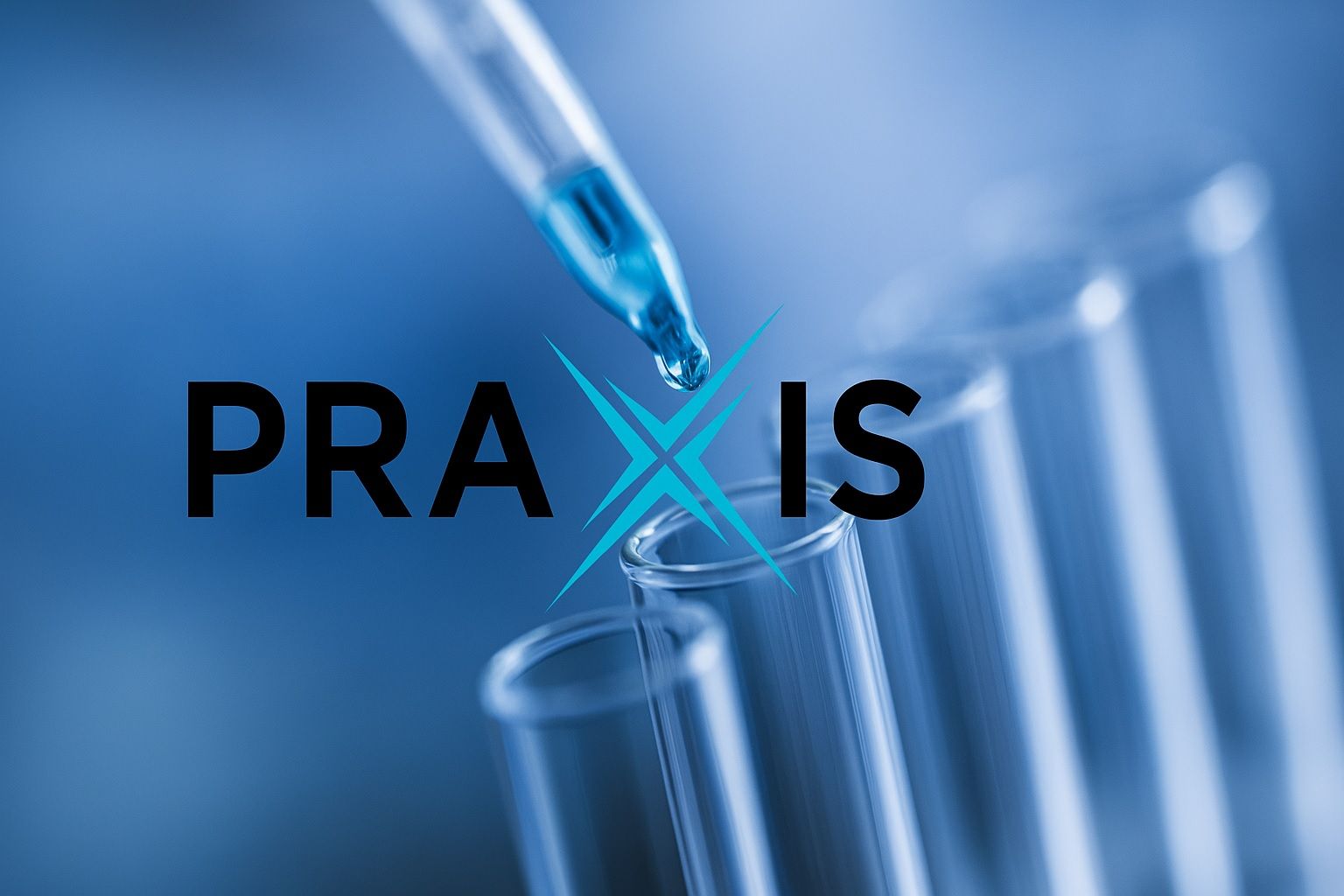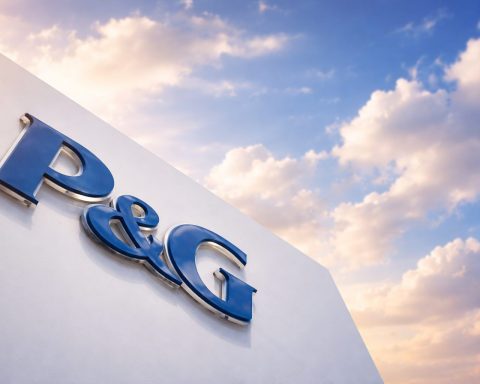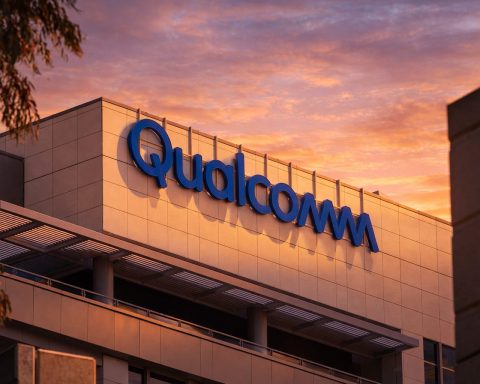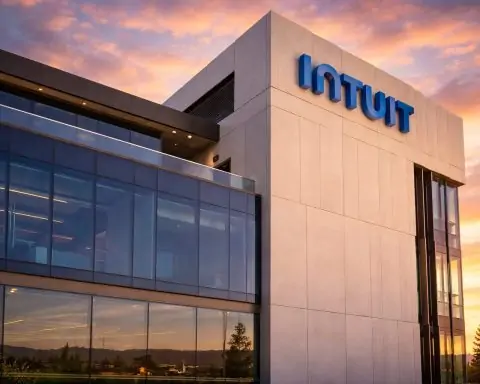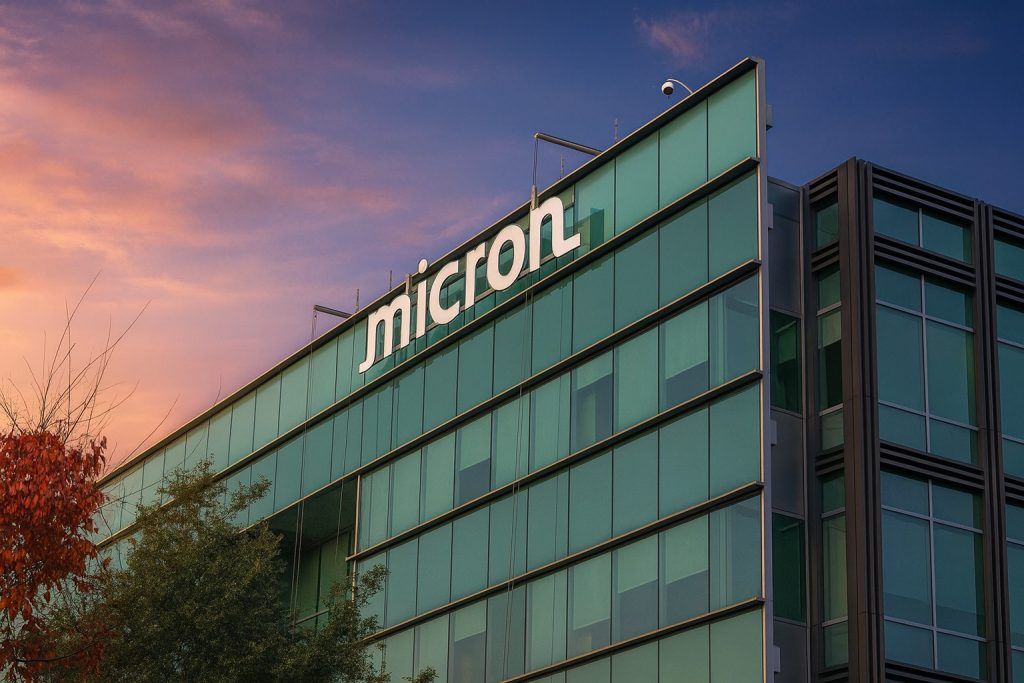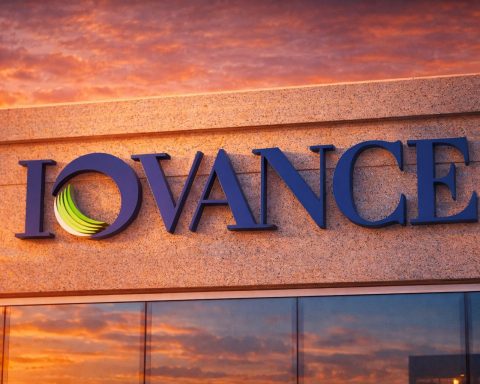- Historic One-Day Surge: Praxis Precision Medicines (NASDAQ: PRAX) stock exploded from about $57 to $162 on October 16 after positive Phase 3 trial results – a roughly 180% single-day jump to new highs [1]. The rally added nearly $3 billion to Praxis’s market cap [2] and continued into Oct. 17, with shares up another ~5% in after-hours and pre-market trading [3].
- Breakthrough Trial Success: Praxis’s lead drug ulixacaltamide hit all key endpoints in two pivotal studies for essential tremor, significantly improving patients’ daily functioning (by ~4.3 points vs placebo) with no serious side effects [4]. A second trial confirmed sustained benefits (55% of treated patients maintained improvement vs 33% on placebo) [5]. If approved, ulixacaltamide would be the first-ever FDA-approved therapy for essential tremor – a neurological disorder affecting millions with no specific treatments today [6]. Praxis plans to file for U.S. approval by early 2026, with ~80% of the required documentation already prepared [7].
- Wall Street Turns Hyper-Bullish: The stunning data flipped analyst sentiment overnight. Price targets jumped into triple-digits across the board – for example, Oppenheimer hiked its target to $250, Truist to $360, Guggenheim to $350, and Baird to $275 [8]. Baird called the results “thesis changing,” and the consensus outlook shifted to “Strong Buy” with an average ~$106 12-month target (up from ~$85 prior) [9]. Several analysts see ulixacaltamide as a potential “blockbuster” therapy in the multi-billion-dollar essential tremor market [10].
- Cash Raise to Fuel Pipeline: Capitalizing on the rally, Praxis announced a $525 million public offering at $157 per share (plus prefunded warrants) late Thursday [11]. The move will bolster its balance sheet for a possible drug launch and ongoing R&D [12]. Praxis already had ~$447 million in cash as of mid-2025 (enough to fund operations into 2028) [13]. Proceeds from the offering – expected to close by Oct. 20 – will fund ulixacaltamide’s commercialization prep and advance other CNS pipeline programs [14], including epilepsy drug candidates (like PRAX-562, which earned an FDA Breakthrough Therapy designation in July) [15].
- Investor Frenzy and Outlook: Trading volume spiked to ~2.8 million shares on Oct. 16 (vs ~450k average) as investors piled in [16]. Retail sentiment is “extremely bullish” on forums [17], though some traders expect volatility and profit-taking after such a parabolic move [18]. Experts say Praxis now stands at a pivotal moment – its surprise comeback “gives hope” for a much-needed therapy [19], but execution and regulatory approval in 2026 will be crucial to translate this breakthrough into sustainable, long-term success [20] [21].
PRAX Stock Soars on Historic Trial Win
Praxis Precision Medicines stock has seen a record-breaking spike in recent days after announcing landmark clinical trial results. On October 16, PRAX shares closed at $162.71, up about 183% in a single session [22] [23]. The stock, which had closed at $57.35 the day prior, more than tripled to reach new 52-week highs [24]. Intra-day, PRAX briefly touched as high as $205 as enthusiasm peaked [25]. By midday Thursday, the company was on track to add roughly $2.7 billion to its market capitalization if gains held [26] – catapulting Praxis’s valuation from around $1 billion to nearly $4 billion overnight. The explosive rally continued into Friday, Oct. 17: shares gained another ~5% in post-market and pre-market trading [27] as Wall Street’s reaction grew increasingly bullish (even a late-day equity offering did little to deter momentum).
This dramatic surge stands out even in the volatile biotech sector. Few stocks have ever jumped nearly 200% in one day on trial news, highlighting the magnitude of Praxis’s breakthrough. The rally was triggered by what analysts are calling game-changing clinical results for the company’s experimental therapy – news that essentially revalued Praxis overnight on hopes of a lucrative new drug coming to market. “The development marks a major turnaround” after a previously grim outlook had pummeled the stock earlier in the year [28] [29]. Traders on social platforms described the move as “historic,” with retail forums showing “extremely bullish” sentiment amid unusually high buzz around PRAX [30].
Despite the stock’s massive run-up, trading has remained active rather than panicked. Volume on Oct. 16 soared to about 2.8 million shares – roughly six times the typical daily volume for PRAX [31] – indicating heavy interest from both institutional and retail investors. Market observers noted that even after such a steep climb, the stock’s momentum was fueled further by a wave of analyst upgrades (see below) and optimism that Praxis’s lead drug could be a true first-in-class therapy. However, some caution that volatility is likely to persist. After a “parabolic” ascent, some profit-taking is to be expected, and any hiccups in the company’s plans could spark a pullback [32]. For now, though, Praxis’s one-day surge has firmly put this once-obscure biotech on the map as one of 2025’s top stock market stories.
Game-Changing Trial Results in Essential Tremor
The catalyst behind PRAX’s eruption was Praxis’s announcement of positive Phase 3 trial results for its lead drug ulixacaltamide in essential tremor – a common movement disorder that currently has no FDA-approved treatments [33]. Early on Oct. 16, the Boston-based company revealed that two pivotal studies in its “Essential3” program had met all primary and key secondary endpoints, demonstrating significant efficacy for ulixacaltamide in controlling tremors [34]. In the first 12-week trial (473 patients), ulixacaltamide patients showed a 4.3-point improvement in functional daily living scores (mADL11) compared to placebo [35]. This improvement in patients’ ability to perform everyday tasks is considered clinically meaningful [36] [37] – a notable outcome in a disorder that causes involuntary shaking of the hands, head, or voice. All secondary measures of symptom severity and patient quality of life also showed benefits on the drug [38].
A second Phase 3 study (238 patients), which tested withdrawal and maintenance of effect, likewise succeeded: 55% of patients who stayed on ulixacaltamide maintained their tremor improvements, versus only 33% of patients who were switched to placebo [39]. This durability result (achieved over an additional four weeks) surpassed expectations and confirmed that the drug’s benefits are sustained over time [40]. Notably, these trials were initially mired in doubt – earlier in 2025 an independent monitoring committee had recommended stopping the program for futility, after interim data seemed to suggest the drug might not meet its goals [41] [42]. Praxis chose to press on regardless, implementing protocol adjustments (with FDA input) and continuing the blinded trials. That decision paid off dramatically with the final analysis. “The trial data win validates [a] major opportunity for the company after Wall Street had given up on the drug,” remarked Piper Sandler analyst Yasmeen Rahimi, highlighting the stunning comeback from near-failure [43].
Beyond efficacy, safety outcomes were encouraging. No serious drug-related adverse events were reported with ulixacaltamide, and overall the therapy was well tolerated [44]. The side effect profile – including mild issues like constipation, dizziness or “brain fog” – was consistent with prior studies and considered manageable [45]. “Today, I think what we talk about is it’s not luck, it’s certainty,” Praxis CEO Marcio Souza said of the results, emphasizing the confidence instilled by the definitive data after earlier doubts [46]. On a conference call, Souza noted that many patients in the trials had suffered from essential tremor for 30+ years with no effective options [47]. He and clinical investigators expressed hope that ulixacaltamide could “help people regain their independence” after decades of unremitting tremors [48].
The significance of this success cannot be overstated for the essential tremor (ET) community. ET is the most common movement disorder, affecting an estimated 7 million Americans (and millions more worldwide) [49]. Yet, until now, patients have had to rely on off-label use of old blood-pressure or anti-seizure drugs, which often provide limited relief and cause side effects [50]. “There’s no specific drug approved for essential tremor and we’re here to change that,” CEO Souza said [51] [52]. Indeed, ulixacaltamide could become the first-ever approved therapy for ET, representing a true breakthrough in a field long considered intractable. The drug works via a novel mechanism – selectively inhibiting overactive T-type calcium channels in certain brain motor circuits – to calm the abnormal neuronal activity underlying tremors [53]. This precision approach appeared to translate into tangible functional improvements for patients, making the trial victory a potential game-changer in neurology.
Following the successful readout, Praxis is moving swiftly on next steps. The company has already requested a meeting with the FDA and plans to submit a New Drug Application (NDA) by early 2026 [54]. Roughly 80% of the required filing documents are already compiled, according to Praxis [55]. Regulators have been engaged early in the process, and the firm hopes for an expedited review given the high unmet need. If all goes well, ulixacaltamide could potentially see FDA approval in late 2026 – delivering a first-in-class therapy to patients who have waited generations for a solution. Analysts assign high chances of approval: Jefferies, for instance, estimates ~70% odds of FDA clearance for ulixacaltamide, given the robust data package [56]. As Reuters noted, the Phase 3 win “gives hope” for finally addressing this long-underserved condition [57]. The focus now shifts to regulatory follow-through and launch preparedness to ensure this hope becomes reality.
Company Background and Pipeline Developments
Praxis Precision Medicines is a Boston-based clinical-stage biopharmaceutical company specializing in treatments for central nervous system (CNS) disorders characterized by imbalances in neuronal excitability [58]. Founded in 2015, the company has built a pipeline targeting neurological conditions with high unmet need, leveraging insights from genetics and neuroscience. Prior to the essential tremor breakthrough, Praxis was relatively under-the-radar, with no approved products and a share price that had languished after setbacks. The ulixacaltamide success instantly elevates Praxis’s profile in biotech, but it is far from a one-trick pony – the company has several other programs in development aimed at epilepsy, depression, and other neurologic diseases.
In fact, Praxis’s broader pipeline has been making quiet progress even as ulixacaltamide grabbed headlines. Notably, the company’s second leading candidate PRAX-562 (relutrigine), a treatment for rare pediatric epilepsies, received FDA Breakthrough Therapy Designation in July 2025 [59]. This designation – granted for SCN2A and SCN8A developmental epileptic encephalopathies – underscores the drug’s potential and provides regulatory support (e.g. expedited development and review) for that program [60]. PRAX-562 is currently in Phase 2 trials, with plans to advance to pivotal studies. Praxis’s CEO hailed the FDA’s recognition of PRAX-562 as “a significant milestone” for children with severe inherited epilepsies [61].
Another important asset is PRAX-114 (vormatrigine), a novel compound being evaluated for major depressive disorder and as an anti-seizure medication in adult epilepsy. In an earlier Phase 2 study (dubbed RADIANT), vormatrigine achieved a 56% median reduction in seizures among patients [62] – an encouraging efficacy signal that prompted Praxis to initiate Phase 3 trials in epilepsy (the “POWER” studies). The first Phase 3 readouts for PRAX-114 are anticipated by late 2025 or early 2026 [63]. Positive results there could further boost Praxis, adding a second major product opportunity. Overall, the company is now running multiple late-stage trials in parallel, a strategy that, while promising, also drives significant R&D spending. In Q2 2025, Praxis reported a net loss of $71 million (more than double the prior year’s loss) as it ramped up research efforts [64]. This underscores why access to ample capital is crucial for the company’s long-term plans.
To fund its ambitious pipeline and upcoming drug launch, Praxis moved quickly to shore up its finances after the stock surge. On Oct. 16, alongside the trial news, the company announced a proposed public stock offering – and by late Thursday it had priced a $525 million equity raise [65]. The offering consists of common shares sold at $157 each (a level roughly matching the closing price) and prefunded warrants at $156.99, with leading biotech-focused banks (TD Cowen, Piper Sandler, Guggenheim, and Truist) underwriting the deal [66] [67]. The financing is expected to close on Oct. 20, subject to customary conditions. Praxis is effectively cashing in on the rally: by raising half a billion dollars at a stock price that’s several-fold higher than it was a week ago, the company minimizes dilution while greatly extending its cash runway.
Prior to this raise, Praxis was not in immediate financial distress – it held approximately $446–$447 million in cash and investments as of mid-2025, which management said was sufficient to fund operations into 2028 at the current burn rate [68]. In fact, just before the Phase 3 readout, Praxis had set up a $250 million at-the-market (ATM) facility to opportunistically sell shares if needed [69]. But given the stock’s explosion, management opted for a traditional large offering to quickly bulk up the balance sheet. Proceeds will be used for prepping ulixacaltamide’s regulatory filings and commercial launch (manufacturing, marketing, etc.), as well as to advance the rest of the pipeline [70]. According to a GlobeNewswire release, funds are earmarked for “continued R&D and potential commercialization of late-stage assets” [71]. Essentially, this war chest should enable Praxis to execute on multiple fronts – bringing ulixacaltamide to market (if approved) and pushing its other clinical programs forward – without needing additional capital in the near term.
Investor reaction to the financing has been fairly positive, reflecting an understanding that biotech companies often need to raise cash after good news. Although equity offerings can dilute existing shareholders, in this case Praxis’s stock barely flinched at the announcement. Commenters noted that $157 per share was an attractive price for the company to sell stock (just days earlier PRAX was below $60), and that raising a substantial sum now is prudent. “Taking advantage of the price run” is how one retail trader described it, adding that it “made sense” given Thursday’s rally [72]. By fortifying its balance sheet while sentiment is strong, Praxis appears to be proactively de-risking its financial future. The additional funds give management flexibility to fully pursue the ulixacaltamide launch and other projects – a critical factor in converting clinical success into real-world patient and investor value.
Wall Street Analysts See Upside – With Caveats
Praxis’s remarkable comeback has prompted a swift re-evaluation on Wall Street. Analysts are now overwhelmingly bullish on PRAX, whereas before the trial news the stock had only limited coverage and a mixed outlook. As of early October, PRAX carried a modest “Moderate Buy” consensus and an average price target around $85 [73]. That all changed overnight. Within hours of the Phase 3 data, numerous firms issued upgrades and dramatically higher targets, signaling that Praxis’s prospects have fundamentally improved. Updated consensus data now show a “Strong Buy” rating, and virtually every covering analyst has raised their 12-month price forecast into the triple digits [74] [75].
The scale of these target hikes is striking. Jefferies, for example, leapt from a $65 target to $300, citing “significant stock upside” after ulixacaltamide’s success and valuing the ET opportunity at over $2.5 billion [76]. Guggenheim Securities boosted its target to $350 (from $155 prior), praising the “robustness” of the Phase 3 data and estimating a >$2 billion U.S. market for the drug with roughly 80% probability of approval [77]. Truist Securities was even more optimistic, reiterating a Buy rating and raising its target to $360 (up from the mid-$80s) while explicitly calling ulixacaltamide a “blockbuster potential” therapy for essential tremor [78]. Oppenheimer similarly went from $115 to $250, describing the result as an “unexpected success” that validates the drug’s approach [79]. TD Cowen upped its target to ~$251 (from just $61 before) after the data met the primary endpoint and demonstrated the mechanism’s validity [80]. Even firms that had been skeptical have reversed course – H.C. Wainwright, for instance, more than doubled its target to $232 and admitted the positive outcome was “a big surprise” given prior futility concerns, now assigning ~85% odds of approval [81].
Some of the boldest predictions came from smaller research shops: JonesResearch set a street-high target of $441 (up from $83), projecting ulixacaltamide could achieve “blockbuster” sales by 2028 – potentially $12 billion+ in annual revenue by 2032 if the drug launches globally and reaches widespread use [82]. Such estimates underscore the extreme bullishness of certain analysts, who see Praxis’s therapy dominating a large untapped market in the coming years. It’s worth noting that Praxis’s own internal modeling isn’t far off – management hinted that even the low end of their sales forecasts for ulixacaltamide runs in the “mid-to-high single-digit billions” of dollars per year [83]. With no direct competition in ET currently (Praxis would have first-mover advantage if approved) [84], some on Wall Street envision the company transforming into a multi-billion-dollar revenue generator in the long run [85]. This optimism about Praxis’s future earnings power underpins the aggressive price targets in the $250–$360+ range.
Amid the euphoria, a few voices are urging caution on valuation and execution risks. After its vertical rally, Praxis’s market cap (around $4 billion) already prices in a lot of expected success. “Sky-high expectations” are now baked into the stock [86]. Analysts warn that any stumbles – such as unexpected FDA requirements, delays in approval, or additional studies requested – could trigger a sharp pullback in the share price [87]. “Success in neurology trials can be binary – failures or setbacks could send the stock sharply down,” one commentary noted bluntly [88]. There are also longer-term considerations: if ulixacaltamide does reach the market, pricing and reimbursement will be watched closely, as treating millions of patients could draw payer scrutiny (though the lack of alternatives may help adoption) [89]. Additionally, Praxis’s breakthrough may spur other companies to accelerate competing programs in movement disorders [90]. Big pharma or biotech rivals could refocus on ET or similar indications now that Praxis has validated this mechanism, potentially increasing future competition.
Still, the prevailing view is that Praxis’s upside far outweighs these risks at present. “For Praxis, this is a game-changer,” wrote one analyst in summary [91]. The consensus 12-month target now sits around $105–$110 (TipRanks reports ~$105.9) [92], implying further upside from current levels – though that average includes some more conservative holdouts. Practically all analysts covering PRAX rate it a Buy (TipRanks counts 10 Buys vs 1 Sell in recent months) [93]. In other words, Wall Street is broadly signaling that Praxis’s story has fundamentally shifted from speculative to promising. The stock is now seen as a top pick in small-cap biotech, with many catalysts ahead. As long as the company executes on its plan – securing FDA approval and successfully launching ulixacaltamide – analysts believe there is substantial room for the valuation to grow. “Finally, some good news in neurology,” one research note proclaimed [94] [95], highlighting how rare it is to see a CNS drug succeed so convincingly in Phase 3. In the eyes of many experts, Praxis has delivered that rare win, and they are recalibrating their models to account for a potentially transformative new therapy on the horizon.
Sector Context: Biotech’s Big Win and Investor Sentiment
Praxis’s achievement arrives at a time when the biotech sector – especially neurological drug developers – needed a win. Developing drugs for brain and movement disorders has historically been fraught with failures; many large pharma companies had pulled back from neurology due to high trial attrition rates. Essential tremor in particular had seen prior drug attempts come up short, leaving patients with decades of frustration. The success of ulixacaltamide thus stands as a beacon of hope in an area long viewed as risky and intractable. It may even encourage renewed investment in similar CNS programs. “Finally, some good news in neurology,” as one analyst put it, reflects a broader sentiment that Praxis’s data is a positive outlier in a field where breakthroughs are rare [96].
From a market standpoint, Praxis’s surge is one of the biggest biotech stock moves in recent memory. It recalls other dramatic revaluations after breakthrough trial readouts (such as previous cases in oncology or rare diseases where stocks have doubled or tripled overnight). The XBI biotech index and sector peers have been relatively subdued in 2025, so PRAX’s 180%-plus jump drew attention across Wall Street. Some commentators noted that such radical repricing – from roughly $1 billion to $4 billion market cap in hours – illustrates the binary nature of biotech outcomes. For investors, it’s a reminder that a single clinical success in a high-unmet-need condition can unlock tremendous value. Conversely, it highlights the risks: earlier this year, Praxis was on the other side of that coin when the interim futility news cratered the stock. Now, with the final data erasing those doubts, the reward side is on full display.
Investor sentiment around Praxis has swung to extremely bullish in the wake of the news. On platforms like Stocktwits, PRAX became a top trending ticker, and retail investors overwhelmingly expressed optimism [97]. Message volume was “extremely high,” and memes about tremor patients finally “shaking with excitement rather than illness” made the rounds, reflecting both hope and a bit of humor. Options trading spiked as well, with traders speculating on further upside – some even betting on a possible buyout scenario (given that small biotechs with pivotal successes often attract takeover interest from bigger pharmaceutical companies). Short interest in PRAX has been relatively low, but any remaining short sellers likely got squeezed badly by the unforeseen rally.
It’s worth noting that not everyone is simply chasing the stock higher – some investors are taking profits or moving to the sidelines after the giant leap. On Friday Oct. 17, PRAX shares pulled back slightly from their early-morning highs as day traders locked in gains, though the price remained far above pre-news levels. Several analysts have advised that new investors should be prepared for volatility and possibly better entry points on dips [98]. The coming months will bring key developments (FDA interactions, possible partnership news, etc.) that could swing the stock in either direction. Overall, however, the mood remains upbeat: the consensus is that Praxis has fundamentally de-risked its lead program and is now in a strong position both scientifically and financially. The company’s decision to raise substantial cash immediately is seen as smart risk management that benefits long-term shareholders, even if it introduced some short-term supply of shares. As one observer noted, “they’re striking while the iron is hot, and you can’t blame them” – a move that ultimately shores up confidence that Praxis can fully capitalize on this breakthrough.
Forecast: Cautious Optimism Ahead
Looking forward, the outlook for Praxis Precision Medicines is one of cautious optimism. The consensus among experts is that the company is on the cusp of a major inflection point – with the potential to evolve from a clinical-stage biotech into a commercial-stage leader in neurology over the next two years. The immediate next step is regulatory: Praxis will work closely with the FDA to get ulixacaltamide approved. The company aims to file its NDA by early 2026 [99], which could position the drug for approval and U.S. launch by late 2026, assuming a standard review timeline. Analysts largely expect the FDA to greenlight ulixacaltamide given the compelling Phase 3 results (most are assigning ~70–85% likelihood of approval) [100] [101]. However, there is always a chance the agency could request additional data or analyses – for example, a longer-term safety study or more information on certain subgroups. Praxis’s management has indicated they engaged with regulators throughout the trial process (especially after the futility scare) to ensure the data would meet requirements, which is a reassuring sign [102]. Investors will be watching for any feedback from the FDA’s upcoming pre-NDA meeting, as that could telegraph the approval trajectory.
If ulixacaltamide earns approval, Praxis would likely seek to commercialize quickly to address the pent-up demand in essential tremor. The company has not yet detailed its go-to-market plans, but the hefty capital raise implies it is preparing to launch largely on its own (at least in the U.S.) rather than waiting for a partner. Some analysts speculate that Praxis could become a takeover target in the interim – a larger pharma might swoop in to acquire the company for its now-validated asset. Indeed, the combination of a first-in-class neurology drug with multi-billion sales potential can be attractive to big pharma, especially those looking to bolster their CNS portfolios. There is already chatter that Praxis may entertain partnership or acquisition offers, though no concrete discussions have been reported [103]. Praxis could also opt to partner for international markets (e.g. Europe or Asia) while marketing the drug itself in the U.S., which is a common strategy for mid-size biotechs.
On the financial front, Praxis’s strong cash position post-offering gives it flexibility. With roughly $1 billion in pro forma cash (pre-offering cash plus $525M new money) and a relatively modest burn rate, the company should be well-funded through the anticipated FDA decision and initial launch phase. This reduces the risk of near-term dilution or cash crunches, a positive for investors. It also means Praxis can continue to advance its pipeline aggressively. Over the next 12–18 months, additional catalysts are expected: Phase 3 trial results for PRAX-114 in epilepsy (late 2025/early 2026) and potentially Phase 2/3 progress on PRAX-562 in pediatric epilepsy [104]. Positive outcomes in those studies could further increase the company’s value, while negative results could have some downside impact (though ulixacaltamide now constitutes the bulk of the valuation). In essence, Praxis will be a company to watch on multiple fronts – its flagship ET program and the follow-up pipeline behind it.
Analyst forecasts for Praxis’s revenue and stock price span a wide range, reflecting both excitement and uncertainty. On the bullish end, some project ulixacaltamide to become a blockbuster seller within a few years of launch, potentially topping $1–2 billion in annual sales by 2028 if it captures a large share of the ET population [105]. In more exuberant models, sales could reach the “mid-single-digit billions” annually in a full penetration scenario [106] – an outlook that underpins the most aggressive $300+ stock price targets. More conservative analysts take a wait-and-see approach, modeling a gradual uptake and peak sales under $1 billion until real-world data come in. The average price target (~$105–$110) suggests that, even after the recent run-up, analysts see roughly +60% upside over the next year [107]. That said, many have noted that Praxis’s stock will likely trade less on near-term earnings (since there won’t be any product revenue until at least 2026) and more on clinical and regulatory milestones. Successful execution of the NDA filing, FDA acceptance, and any hint of an early approval or priority review could all boost the stock. Conversely, any delays or additional study requirements would be taken negatively.
In the near term, volatility is expected to remain high. PRAX has essentially become a news-driven, event-driven stock – surging on good news and susceptible to swings on rumors or sentiment shifts. Long-term investors are now grappling with the question of how to value Praxis’s pipeline and platform beyond just the tremor drug. The company’s ability to deliver on other programs (like epilepsy) will factor into whether it can evolve into a multi-product CNS pharma or remains a one-hit wonder. For now, the focus is squarely on turning the ulixacaltamide victory into a tangible, approved treatment. The coming months will involve intense preparations: manufacturing scale-up, hiring a commercial team, engaging with neurologists and patient groups, and possibly publishing the full Phase 3 data in a journal or conference (to build awareness and credibility in the medical community).
In summary, Praxis Precision Medicines enters late 2025 riding a wave of optimism – an example of a high-risk biotech bet that is, so far, paying off. The company’s Essential3 trial triumph has opened the door to what could be a lucrative niche in neurology, and analysts believe the stock’s journey is just beginning. “Praxis now stands at a pivotal moment,” observed one industry outlet, noting that it has a clear shot at delivering an entirely new therapy to patients in dire need [108]. There are challenges ahead, no doubt: regulatory hurdles, launch execution, and potential competitive responses. But with a bolstered balance sheet, a energized investor base, and scientific validation in hand, Praxis appears well-positioned to meet those challenges. As one of the trial investigators put it, these results “give hope” [109] – not only to patients and doctors, but to shareholders who have bet on Praxis’s vision. All eyes will be on the FDA and Praxis’s next steps as the company strives to turn an extraordinary clinical win into a lasting biotech success story.
Sources: Press releases and investor materials from Praxis Precision Medicines; news reports from Reuters and GlobeNewswire; analysis and commentary from TechStock² (ts2.tech), MedCity News, Stocktwits News, and Yahoo Finance; TipRanks consensus data. All information is current as of Oct. 17, 2025.
References
1. ts2.tech, 2. ts2.tech, 3. stocktwits.com, 4. ts2.tech, 5. ts2.tech, 6. medcitynews.com, 7. ts2.tech, 8. ts2.tech, 9. ts2.tech, 10. ts2.tech, 11. stocktwits.com, 12. stocktwits.com, 13. ts2.tech, 14. ts2.tech, 15. ts2.tech, 16. economictimes.indiatimes.com, 17. stocktwits.com, 18. ts2.tech, 19. ts2.tech, 20. ts2.tech, 21. ts2.tech, 22. ts2.tech, 23. ts2.tech, 24. ts2.tech, 25. www.google.com, 26. ts2.tech, 27. stocktwits.com, 28. www.fiercebiotech.com, 29. www.fiercebiotech.com, 30. stocktwits.com, 31. economictimes.indiatimes.com, 32. ts2.tech, 33. medcitynews.com, 34. ts2.tech, 35. ts2.tech, 36. www.fiercebiotech.com, 37. www.fiercebiotech.com, 38. ts2.tech, 39. ts2.tech, 40. ts2.tech, 41. ts2.tech, 42. ts2.tech, 43. ts2.tech, 44. ts2.tech, 45. ts2.tech, 46. ts2.tech, 47. ts2.tech, 48. ts2.tech, 49. medcitynews.com, 50. medcitynews.com, 51. medcitynews.com, 52. medcitynews.com, 53. ts2.tech, 54. ts2.tech, 55. ts2.tech, 56. stocktwits.com, 57. ts2.tech, 58. finviz.com, 59. ts2.tech, 60. ts2.tech, 61. ts2.tech, 62. ts2.tech, 63. ts2.tech, 64. ts2.tech, 65. stocktwits.com, 66. stocktwits.com, 67. stocktwits.com, 68. ts2.tech, 69. ts2.tech, 70. ts2.tech, 71. medcitynews.com, 72. stocktwits.com, 73. ts2.tech, 74. ts2.tech, 75. ts2.tech, 76. stocktwits.com, 77. stocktwits.com, 78. ts2.tech, 79. ts2.tech, 80. ts2.tech, 81. stocktwits.com, 82. stocktwits.com, 83. ts2.tech, 84. ts2.tech, 85. ts2.tech, 86. ts2.tech, 87. ts2.tech, 88. ts2.tech, 89. ts2.tech, 90. ts2.tech, 91. ts2.tech, 92. economictimes.indiatimes.com, 93. economictimes.indiatimes.com, 94. ts2.tech, 95. ts2.tech, 96. ts2.tech, 97. stocktwits.com, 98. ts2.tech, 99. ts2.tech, 100. stocktwits.com, 101. stocktwits.com, 102. ts2.tech, 103. ts2.tech, 104. ts2.tech, 105. stocktwits.com, 106. ts2.tech, 107. economictimes.indiatimes.com, 108. ts2.tech, 109. ts2.tech
